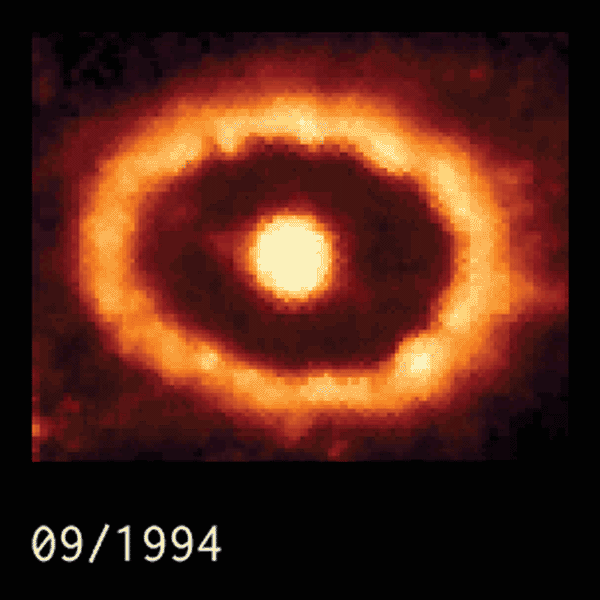Explanation: Twenty five years ago, the brightest supernova of modern times was sighted. Over time, astronomers have watched and waited for the expanding debris from this tremendous stellar explosion to crash into previously expelled material. A clear result of such a collision is demonstrated in the above time lapse video of images recorded by the Hubble Space Telescope between 1994 and 2009. The movie depicts the collision of an outward moving blast wave with the pre-existing, light-year wide ring. The collision occurred at speeds near 60 million kilometers per hour and shock-heats the ring material causing it to glow. Astronomers continue to study the collision as it illuminates the interesting past of SN 1987A, and provides clues to the origin of the mysterious rings.
Gallery:
Jupiter-Venus-Moon Conjunction
1999 2000 2001 2002 2003 2004 2005 2006 2007 2008 2009 2010 2011 2012 2013 2014 2015 2016 2017 2018 2019 2020 2021 2022 2023 2024 2025 |
Yanvar' Fevral' Mart Aprel' Mai Iyun' Iyul' Avgust Sentyabr' Oktyabr' Noyabr' Dekabr' |
NASA Web Site Statements, Warnings, and Disclaimers
NASA Official: Jay Norris. Specific rights apply.
A service of: LHEA at NASA / GSFC
& Michigan Tech. U.
|
Publikacii s klyuchevymi slovami:
supernova - shock - Sverhnovye - ostatok Sverhnovoi - udarnye volny
Publikacii so slovami: supernova - shock - Sverhnovye - ostatok Sverhnovoi - udarnye volny | |
Sm. takzhe:
Vse publikacii na tu zhe temu >> | |
Mneniya chitatelei [13]
